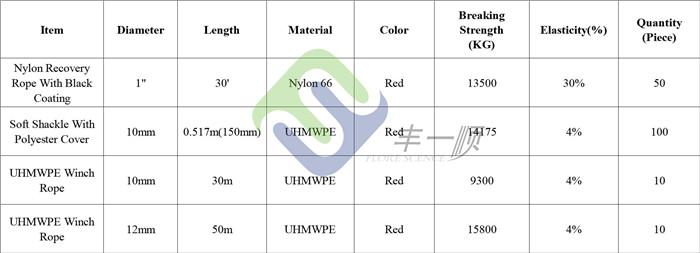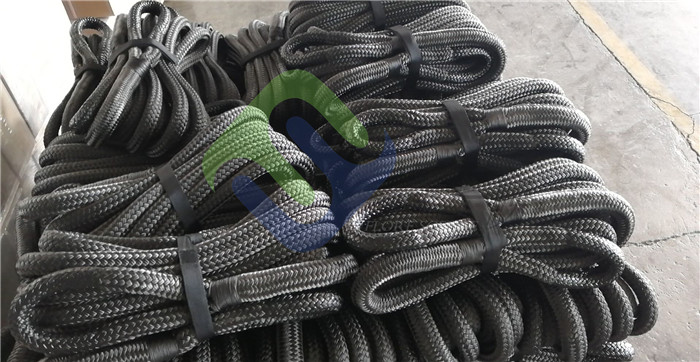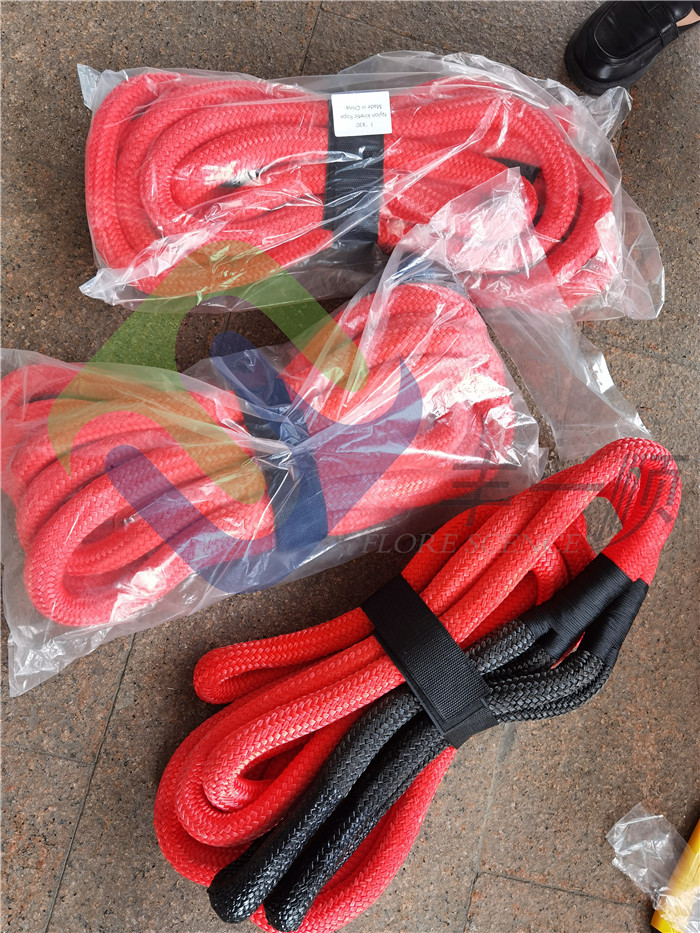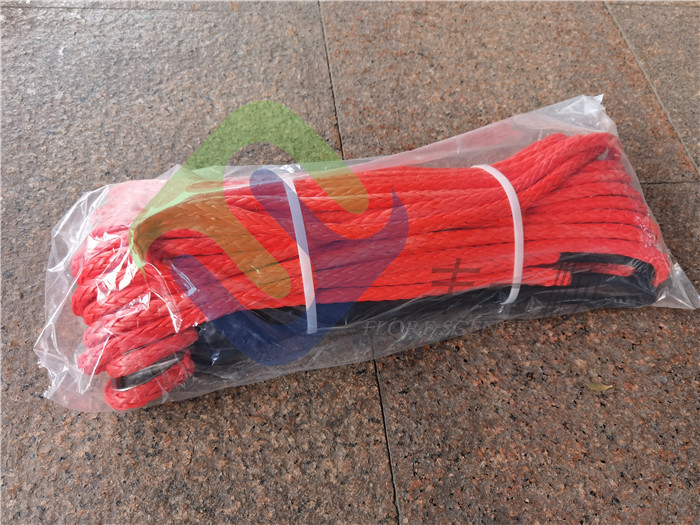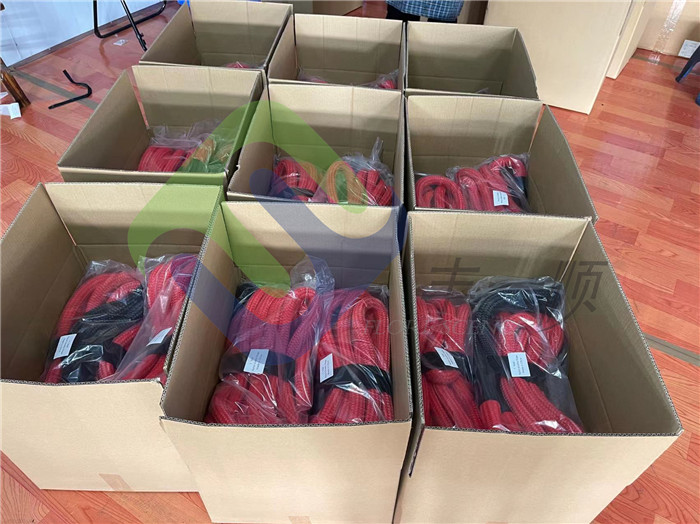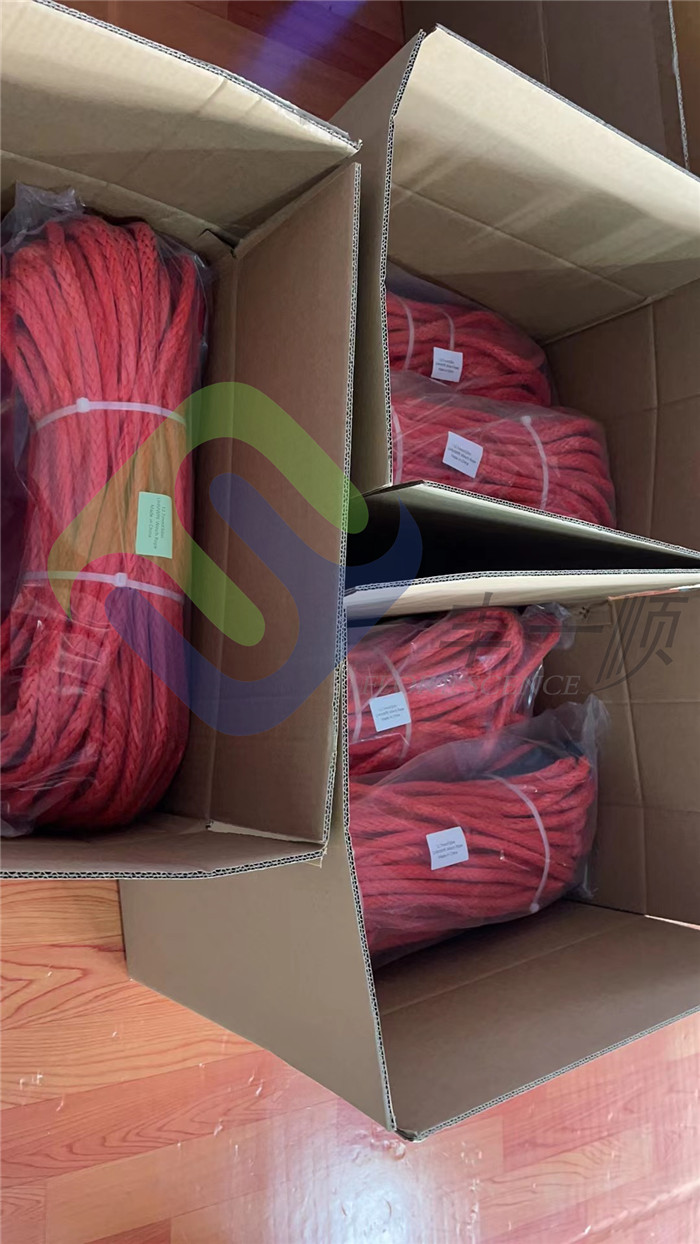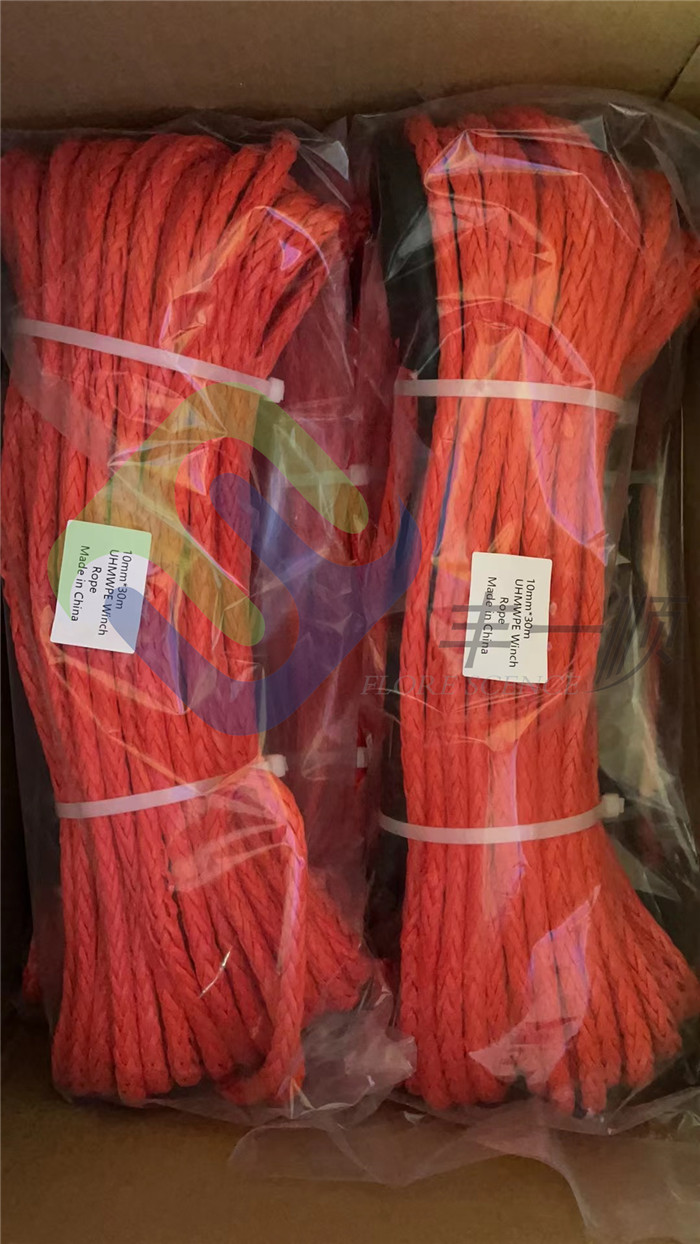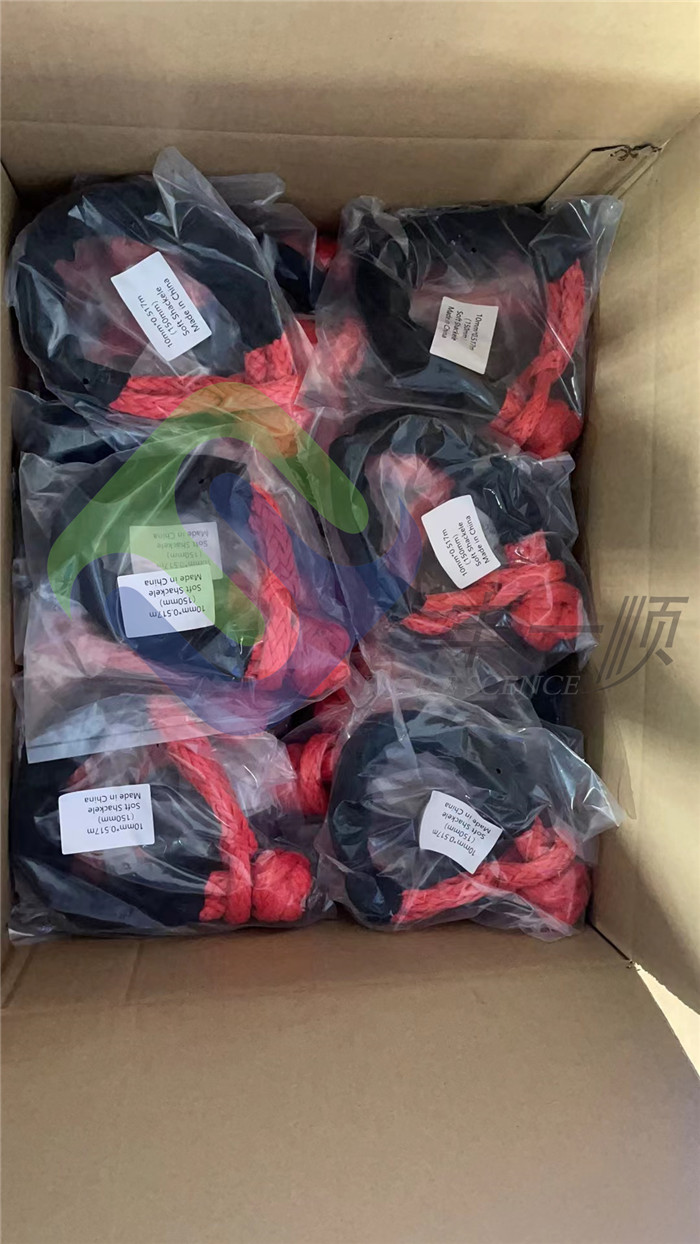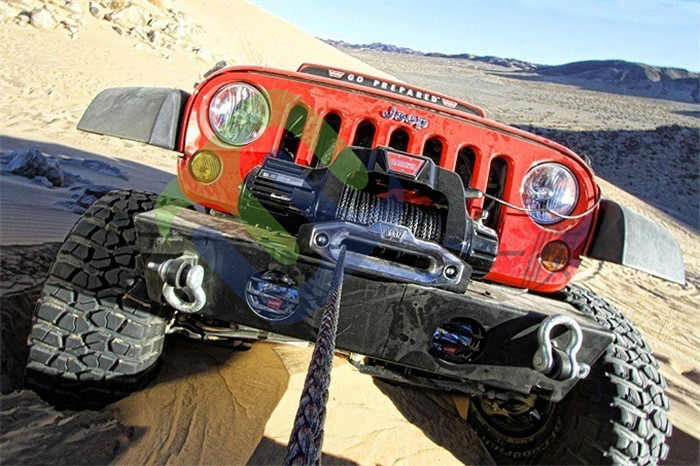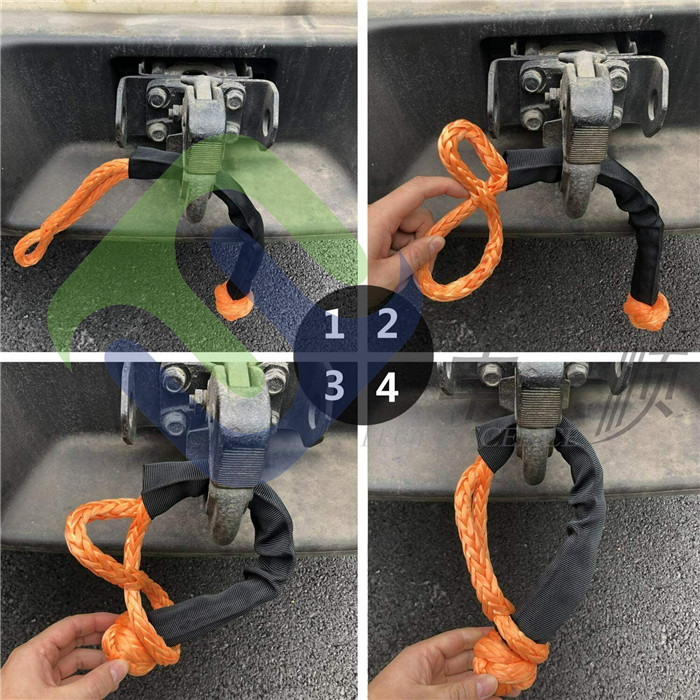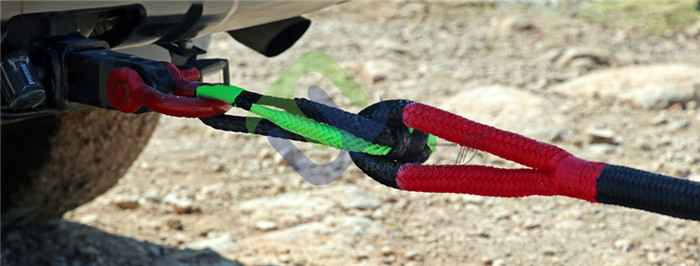Nylon Recovery Rope and Soft Shackles send to Middle East customer
We have just sent a batch of nylon receovery rope, soft shackle and winch ropes to our Middle east customer.
Below are the detailed size:
Here are some picture to show you:
Here are some product application for your reference.
Florescence Offroad’s Kinetic Recovery Ropes are designed and built with the express purpose of stretching under load, to provide a smooth and powerful pull. A Kinetic Recovery Rope, also sometimes referred to as a snatch rope or a yanker, is different than a typical tow rope or tow strap. Some key features that set our Kinetic Recovery Ropes apart:
1. 100% China Made Double Braid Nylon
2. Maximum Strength Nylon (Other black nylon products have strength ~10% lower)
3. Professionally spliced in China by Florescence Offroad’s trained and certified splicers
4. Abrasion protection in the eyes and on the rope body
5. Up To 30% Elongation Under Load
Tips:
How to Correctly Use Your Kinetic Recovery Rope
Step 1: Verify your equipment is adequate for the use and in good condition. A Kinetic Recovery Rope should be sized such that the Min. Breaking Load (MBL) is roughly 2-3 times the Gross Vehicle Weight. To properly select a rope for your vehicle, follow the guidelines on the chart below.
Step 2: Securely attach rope to both vehicles – use a proper shackle or tow point. Recovery points should be properly welded or bolted to the vehicle chassis. WARNING: Never connect recovery equipment to a tow ball, as they are not designed for this type of load and can fail, causing serious damage.
Step 3: Ensure all bystanders are well clear of the area. No person should be within 1.5xthe rope length of either vehicle, unless inside one of the vehicles.
Step 4: Tow the stuck vehicle out. The towing vehicle can start with slack in the tow rope and drive up to 15mph max. WARNING: Do not exceed 15MPH with a properly sized rope. WARNING: Do not pull in a direction that would side load your recovery points unless they are specifically designed to handle side loads; most are not. Continue to pull on stuck vehicle until no longer stuck.
Step 5: Unhook and stow your rope.
Nylon Recovery Rope and Soft Shackles send to Middle East customer
We have just sent a batch of nylon receovery rope, soft shackle and winch ropes to our Middle east customer.
Below are the detailed size:
Here are some picture to show you:
Here are some product application for your reference.
Florescence Offroad’s Kinetic Recovery Ropes are designed and built with the express purpose of stretching under load, to provide a smooth and powerful pull. A Kinetic Recovery Rope, also sometimes referred to as a snatch rope or a yanker, is different than a typical tow rope or tow strap. Some key features that set our Kinetic Recovery Ropes apart:
1. 100% China Made Double Braid Nylon
2. Maximum Strength Nylon (Other black nylon products have strength ~10% lower)
3. Professionally spliced in China by Florescence Offroad’s trained and certified splicers
4. Abrasion protection in the eyes and on the rope body
5. Up To 30% Elongation Under Load
How to Correctly Use Your Kinetic Recovery Rope
Step 1: Verify your equipment is adequate for the use and in good condition. A Kinetic Recovery Rope should be sized such that the Min. Breaking Load (MBL) is roughly 2-3 times the Gross Vehicle Weight. To properly select a rope for your vehicle, follow the guidelines on the chart below.
Step 2: Securely attach rope to both vehicles – use a proper shackle or tow point. Recovery points should be properly welded or bolted to the vehicle chassis. WARNING: Never connect recovery equipment to a tow ball, as they are not designed for this type of load and can fail, causing serious damage.
Step 3: Ensure all bystanders are well clear of the area. No person should be within 1.5xthe rope length of either vehicle, unless inside one of the vehicles.
Step 4: Tow the stuck vehicle out. The towing vehicle can start with slack in the tow rope and drive up to 15mph max. WARNING: Do not exceed 15MPH with a properly sized rope. WARNING: Do not pull in a direction that would side load your recovery points unless they are specifically designed to handle side loads; most are not. Continue to pull on stuck vehicle until no longer stuck.
Step 5: Unhook and stow your rope.
Post time: Nov-01-2022
